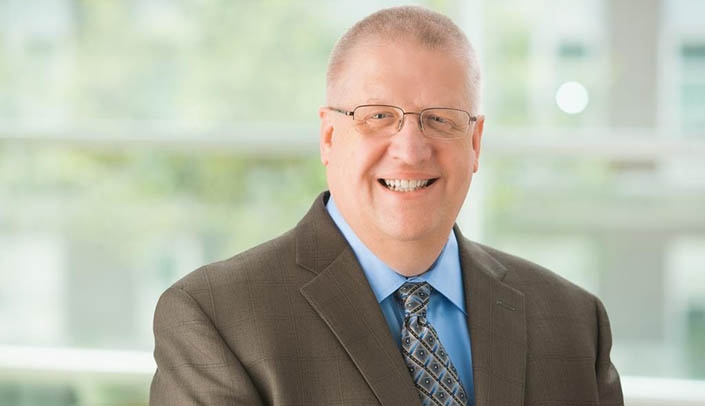A landmark clinical trial studying the latest version in the HeartMate family, the HeartMate 3 left ventricular assistive device (LVAD), concluded this past fall. In the recently published annual summary of that study, Nebraska Medicine landed in the top 10 of nearly 70 medical centers across the country when it comes to the number of patients enrolled, ahead of large research centers including Mayo Clinic, Johns Hopkins University Hospital and Brigham and Women’s Hospital.
At the time of the publication, Nebraska Medicine enrolled 26 patients in the initial phase of the trial and an additional 26 patients in the continued accessed phase, for a total of 52.
“To be in the Top 10 is pretty significant, considering we have a smaller area from which we draw patients compared to others,” said Timothy Ryan, coordinator of Nebraska Medicine’s Mechanical Circulation Support Program, Cardiothoracic Surgery. “We are fairly aggressive with our treatment of heart failure patients. We work closely with referring providers to actively recruit patients. We have an outstanding program that offers high-quality care to patients in our region.”
An LVAD is a device that surgeons connect to the heart, taking over the job of pumping blood out of the heart and into the aorta, the body’s main blood vessel. It is offered to patients with end-stage heart failure whose symptoms can no longer be treated with medication alone. An LVAD is used as a bridge therapy for a patient awaiting heart transplantation, and is also used as a destination therapy for patients who are not currently a candidate for transplant.
The clinical trial of Heartmate 3 began in the fall of 2015. The new version corrected some of the adverse effects of Heartmate II.
“The Heartmate 3 involved a complete redesign of the pump,” Ryan said. “The new pump reduces the risk of formation of clots, which was a problem with the previous design.”
The new device attaches directly to the heart and does not require additional procedures to allow the LVAD to sit in the chest cavity. Because of this, patients require less blood products in surgery.
“This enhancement to the HeartMate 3 and the surgical procedure contributed to a reduced length of stay after the surgery, down from 22 days to 18.5 days,” Ryan said. “This device will be the new standard for LVADs moving forward.”
LVADs can be life-changing for heart failure patients.
“A patient can go from barely being able to walk a block to walking miles without becoming short of breath,” Ryan said. “This device allows them to return to work and to the activities they enjoy. It’s a huge impact on their quality of life.”
